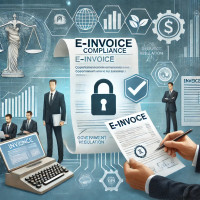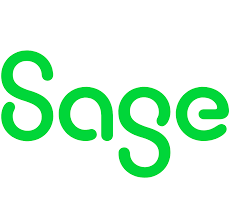E-Invoice Compliance: A Comprehensive Guide for Businesses

Strong 8k brings an ultra-HD IPTV experience to your living room and your pocket.
In today’s digital economy, governments worldwide are adopting electronic invoicing (e-invoicing) to improve tax compliance, reduce fraud, and streamline business processes. As more countries implement e-invoicing mandates, understanding e-invoice compliance has become essential for businesses of all sizes. This guide provides a detailed overview of e-invoice compliance, including its benefits, requirements, and best practices to help your business stay compliant and efficient.
What is E-Invoicing?
E-invoicing refers to the electronic exchange of invoice documents between suppliers and buyers in a structured digital format. Unlike traditional paper or PDF invoices, e invoice compliance are created, transmitted, and processed electronically, ensuring accuracy and seamless integration with accounting systems.
Governments often mandate e-invoicing to enhance transparency in business transactions, ensure proper tax collection, and combat tax evasion. These mandates typically require businesses to generate e-invoices in a specific format and report them to tax authorities in real time.
Why is E-Invoice Compliance Important?
Failing to comply with e-invoicing regulations can lead to severe penalties, including fines, delayed payments, and reputational damage. Compliance ensures:
Legal Adherence: Meeting government-mandated requirements to avoid penalties.
Efficient Tax Reporting: Streamlining the process of reporting taxes and claiming input tax credits.
Improved Business Operations: Enhancing efficiency and reducing errors through automation.
Global Trade Facilitation: Simplifying cross-border transactions with standardized processes.
Key Components of E-Invoice Compliance
To achieve e-invoice compliance, businesses need to address several critical aspects:
1. Mandatory Fields and Formats
Each jurisdiction specifies mandatory fields that must be included in an e-invoice. Common fields include:
Invoice number
Date of issuance
Taxpayer Identification Numbers (TIN)
Description of goods or services
Tax rates and amounts
Total invoice value
Countries also mandate specific formats, such as XML or JSON, to ensure machine-readability and compatibility with tax authority systems.
2. Real-Time Reporting
Many countries require businesses to report e-invoices to tax authorities in real-time or near-real-time. For instance:
India: Businesses must upload e-invoices to the Invoice Registration Portal (IRP) for validation and obtain a unique Invoice Reference Number (IRN).
Italy: E-invoices must be transmitted via the Sistema di Interscambio (SdI).
3. Digital Signatures
Digital signatures ensure the authenticity and integrity of e-invoices. Some jurisdictions mandate the use of digital certificates issued by accredited authorities.
4. Archiving and Retention
E-invoices must be stored securely for a specified period, which varies by country. For example:
In the EU, invoices must be retained for at least six years.
In the US, records should be kept for at least seven years.
Proper archiving ensures compliance and facilitates audits.
Global Trends in E-Invoice Compliance
Europe
The European Union has been at the forefront of e-invoicing adoption. Directive 2014/55/EU mandates e-invoicing for public procurement across EU member states. Countries like Italy, France, and Spain have extended these requirements to B2B transactions.
Asia-Pacific
India: E-invoicing is mandatory for businesses with a turnover above a specified threshold. The system integrates with the Goods and Services Tax (GST) framework.
China: The Golden Tax System requires electronic special VAT invoices for tax reporting.
Americas
Brazil: Known for its advanced e-invoicing system, Brazil mandates the use of Nota Fiscal Eletrônica (NF-e) for tax compliance.
Mexico: The Comprobante Fiscal Digital por Internet (CFDI) is required for all invoices.
Middle East and Africa
Saudi Arabia: E-invoicing became mandatory in 2021, with a phased implementation.
South Africa: Businesses are encouraged to adopt e-invoicing as part of digital transformation efforts.
Steps to Achieve E-Invoice Compliance
1. Understand Local Regulations
Research the e-invoicing requirements in the countries where you operate. Consult official tax authority websites and seek guidance from compliance experts.
2. Choose the Right E-Invoicing Solution
Select an e-invoicing solution that meets your business needs and complies with local regulations. Key features to look for include:
Support for mandated formats and digital signatures
Integration with ERP and accounting systems
Real-time reporting capabilities
Secure archiving and retrieval options
3. Train Your Team
Educate your finance and compliance teams on e-invoicing requirements and the chosen solution’s functionalities. This ensures smooth implementation and ongoing compliance.
4. Monitor and Update
Stay informed about changes in e-invoicing regulations. Regularly update your processes and systems to remain compliant.
Benefits of E-Invoicing Beyond Compliance
E-invoicing offers numerous advantages, including:
Cost Savings: Reducing printing, mailing, and storage costs.
Faster Payments: Accelerating invoice approval and payment cycles.
Enhanced Accuracy: Minimizing errors through automated data validation.
Environmental Impact: Reducing paper usage and carbon footprint.
Challenges in E-Invoice Compliance
Despite its benefits, e invoice compliance can be challenging due to:
Complexity of Regulations: Varying requirements across countries.
Technology Integration: Ensuring seamless integration with existing systems.
Change Management: Adapting internal processes and training staff.
E-Invoice Compliance Best Practices
To overcome these challenges, consider the following best practices:
Invest in Scalable Solutions: Choose a platform that can adapt to changing regulations and support multiple jurisdictions.
Engage Experts: Work with compliance consultants or technology partners with expertise in e-invoicing.
Automate Workflows: Leverage automation to streamline invoice generation, validation, and reporting.
Conduct Regular Audits: Periodically review your processes and systems to ensure ongoing compliance.
Conclusion
E-invoice compliance is more than a regulatory requirement; it’s a strategic opportunity to modernize your business operations. By understanding local regulations, investing in the right technology, and adopting best practices, your business can achieve compliance while reaping the benefits of increased efficiency and transparency.
Note: IndiBlogHub features both user-submitted and editorial content. We do not verify third-party contributions. Read our Disclaimer and Privacy Policyfor details.




